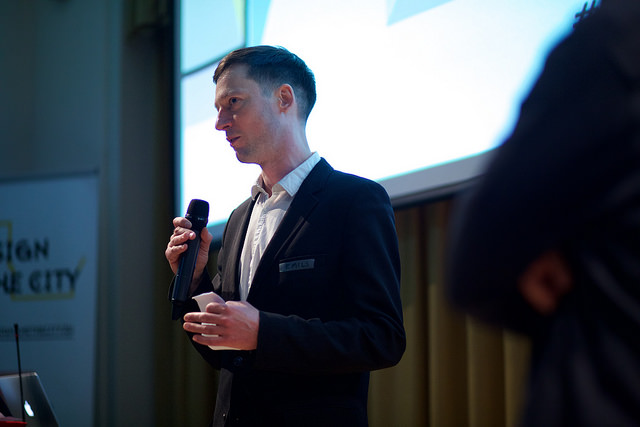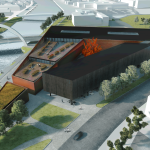Just a few weeks after our study tour in the Netherlands, again I found myself in Amsterdam: this time to participate in the conference Design and the City. The experience started for me with a two-day Lab of Labs – a ‘design charrette‘ led by seasoned designers from around the planet. I took part in the one called ‘Fields of View’, led by Bharath Palavalli of the eponymous studio out of Bangalore, India.
The groups – 10 to 15 participants in each – were rather diverse in terms of background, origin, and age. (We had a British designer born in Hong Kong, a Brazilian studying architecture in London, an American entrepreneur working for the European Commission and living in Germany – you get the idea.)
We took Amsterdam’s Knowledge Mile as the object of our design, and over the two days went through a detailed process, asking the questions: What are the issues? What is the problem? Who are the stakeholders?
We then mapped the stakeholders on endless post-it notes, and tried to get an understanding of their nature (formal/informal, individual/collective); their relationships (of money/power/services); the direction, strength and character of those relationships (reciprocal or not?).
Then we speculated on the stakeholders’ resources and constraints, and explored the scenarios: desired state? stakeholders minus the constraints? minus the key resource?
The process, with Bharath’s skillful mentoring and gentle nudging, was iterative and self-reflective. Many times we were encouraged to revisit and restate the problem – and indeed, we did.
The charrette was ostensibly about designing games for social interaction, but in fact we came to the game design only in the last hour of the process. This is my take-away then: 95% of design is about understanding the stakeholders and the problem… the solution is almost the easiest part.
Being part of the process, although a ‘simulated’ one – as we were not the real stakeholders of the Knowledge Mile – made me realise that the essence of design is in facilitation, diplomacy, navigation of difficult and contradictory situations. If the process is well designed, we can rise above our limited understanding, look through the eyes of others – beyond the cliches of our own minds.
I, for one, came out of the charrette with an expanded Field of View.
The charettes concluded on the evening of day 2 with a presentation of results and take-aways to our peers in the other groups. You can read more on the other charrettes, and here are some photos of the creative process.
Text by Emils Rode, Photos by Sebastiaan ter Burg @ter_burg











